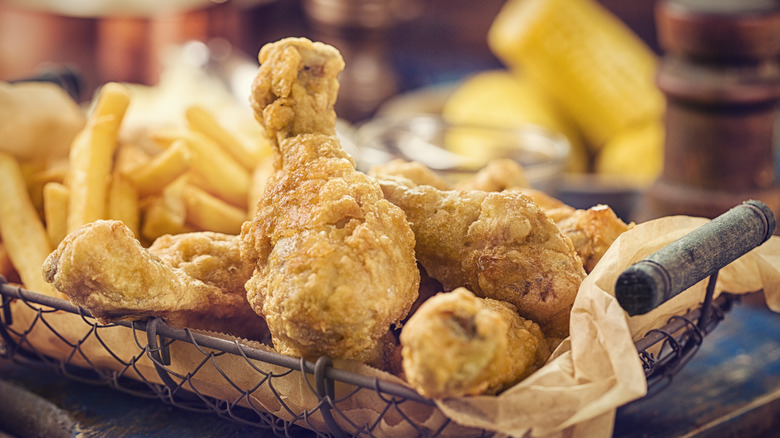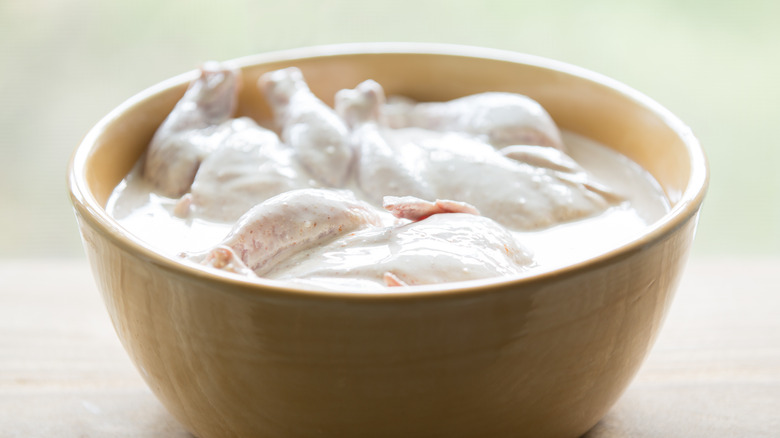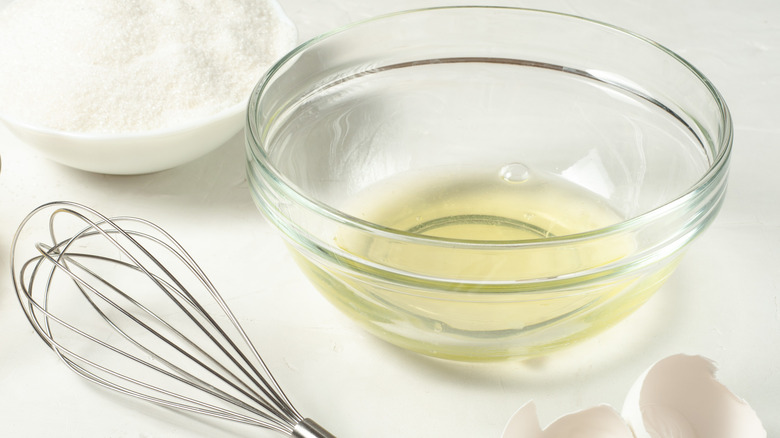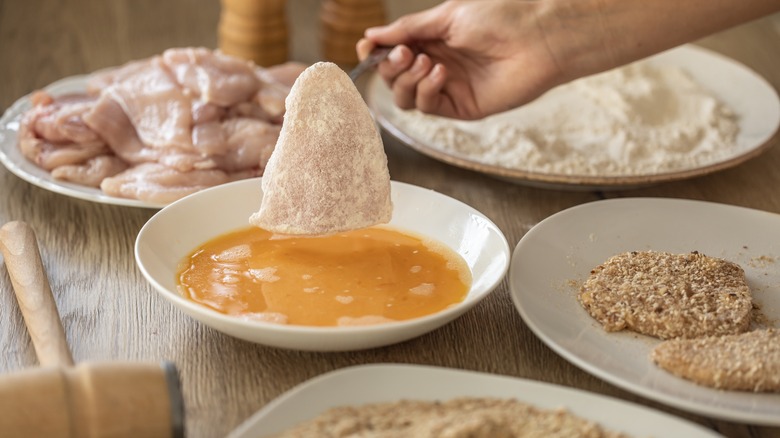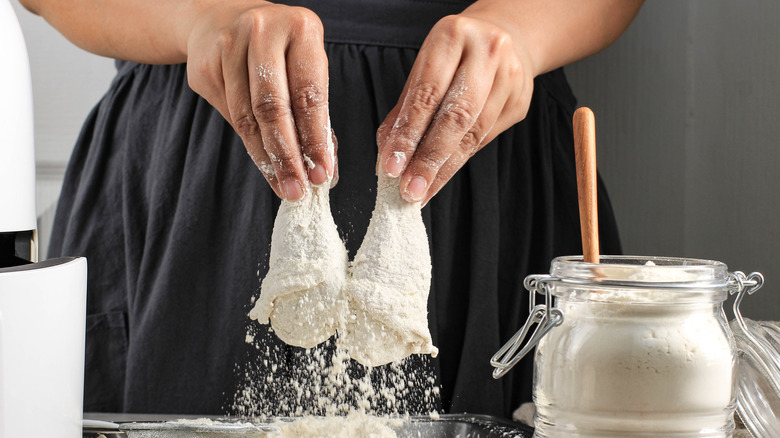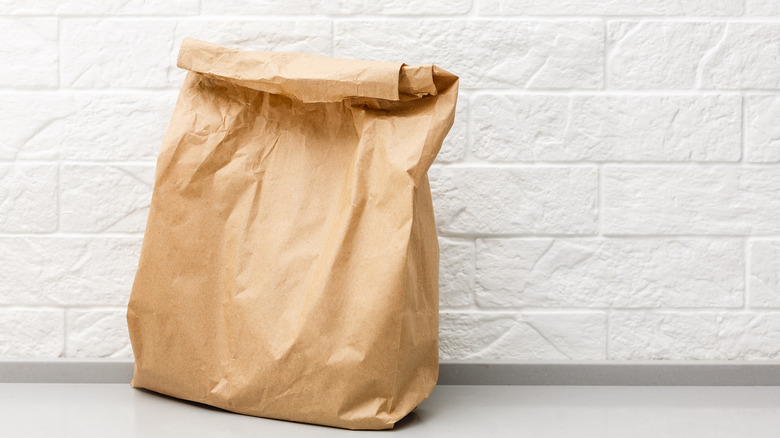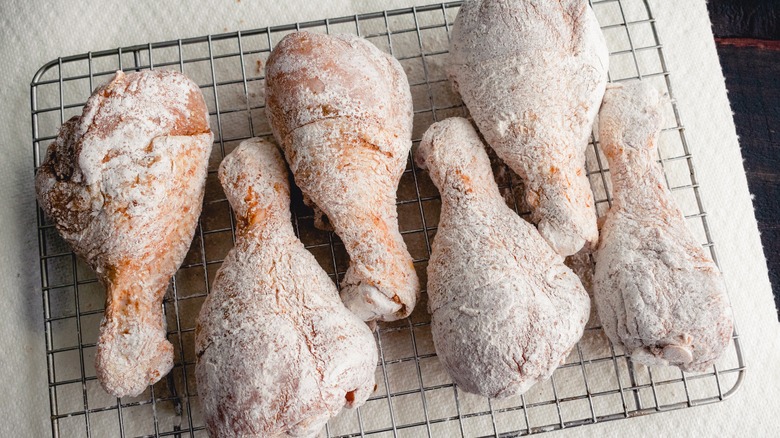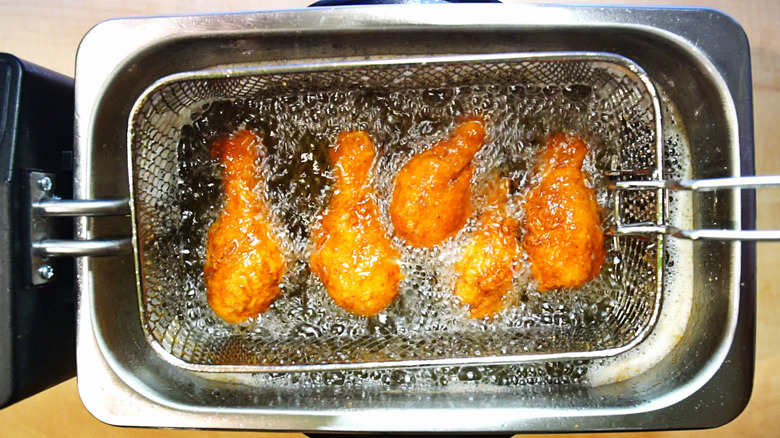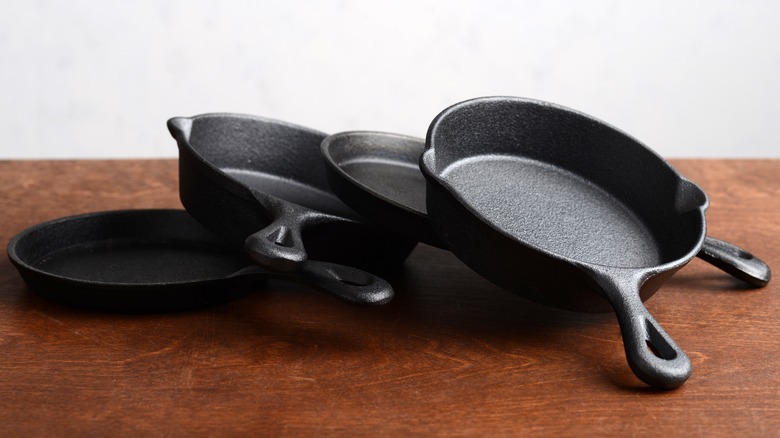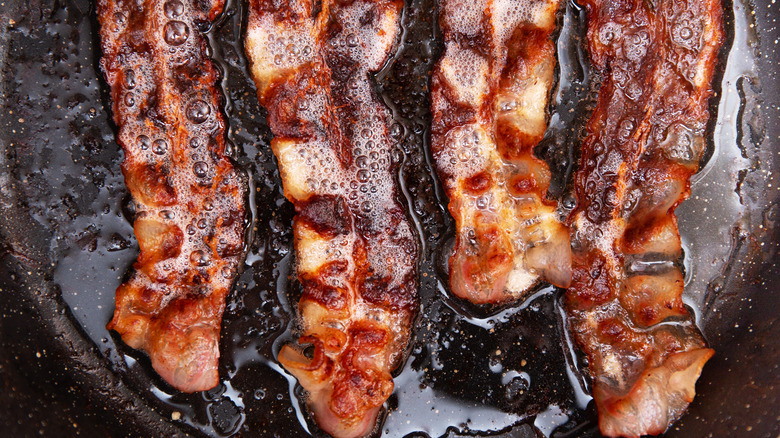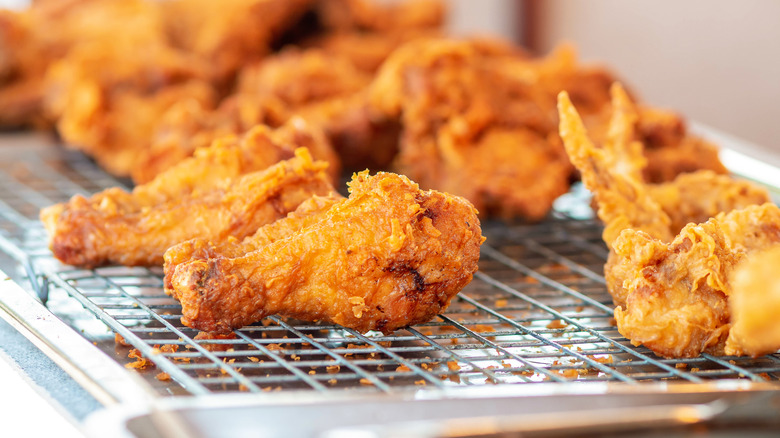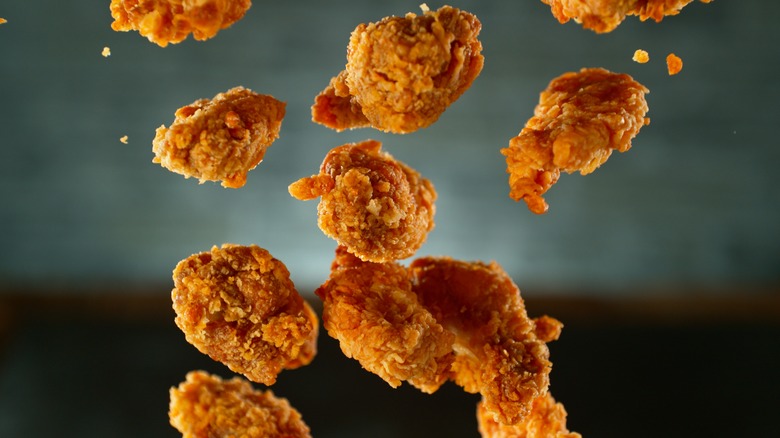11 Best Hacks For The Ultimate Fried Chicken
Fried chicken is one of those rare dishes with a magnetic, universal appeal and almost mythical status. Perhaps the secret is its unpretentious and comforting character, but it probably has something to do with the otherworldly combination of golden, crispy crust and potently juicy meat.
Anywhere you go in the world, there is a likely chance that you'll stumble on a fried chicken dish. There are seemingly endless recipes for fried chicken that promise to deliver the juiciest and the crispiest fried chicken you'll ever get to try. We often get lost in this sea of options and usually resort to the classic method that traditionally delivers subpar results. But no one deserves mediocre fried chicken, and it's time we tackle the issue with the fundamental hacks that will help build the ultimate, lip-smacking version of this classic.
Take this list as an encouragement to finally learn all the secrets of the trade so you can turn fried chicken into a rewarding experience and finally construct your perfect recipe. These hacks will guide you through the brining process, suggest some genius hacks for a better crisp, and instruct you on the best frying technique. Simple but effective, these hacks will upgrade your fried chicken game to a whole new level.
1. Buttermilk in the brine keeps the chicken juicy
You probably know buttermilk for its use in pancakes or waffles, but it should also become a staple addition to your meat marinades. Buttermilk is best described as a close relative to yogurt. The term was initially used only for the thin, milky liquid left after butter churning that does not pack a lot of tart flavor. Nowadays, the name is usually associated with cultured buttermilk, a variety where skim milk is enriched with cultured bacteria to provide a distinctive tangy note. Cultured buttermilk is perfect for cooking, and it is the one you will typically find in the store.
Traditionally, birds designated for frying or roasting were submerged in a classic brine that usually incorporated water and salt, sometimes with additional spices or sugar. Though water brine does a decent job, you will get much better results by swapping it for buttermilk. The liquid marinade will keep your chicken juicy, and as buttermilk is packed with lactic acid, it will partially penetrate the chicken pieces and help to break up some of the firm protein strands, resulting in much softer and tender meat. It will also impart some of its tangy flavor.
You should allow the chicken to marinate for at least a couple of hours, ideally overnight, but do not leave it for too long as the acidity may be too strong and make the meat too soft.
2. Egg whites will help the crust stay put
Dipping chicken in egg wash and then coating it with flour, cornstarch, or breadcrumbs is one of the most common techniques for making fried chicken. The egg wash should help the flour adhere to the piece of meat, and some even promote the classic double dredge to create a much thicker coating. Classic egg wash is made with whole eggs that are lightly whisked to achieve a uniform consistency while adding milk, water, and seasoning is optional. Though egg wash is a welcomed element, the ingenious hack here is to skip the yolks and use only lightly whisked egg whites for dipping.
Unlike fatty egg yolks, egg whites are protein-laden parts of the egg that will perfectly stick to the chicken, acting like an adhesive between the dredge and the meat. This hack will prevent the dredge from slipping off the meat in large chunks, leaving some parts without the crunchy coating. Essentially, the egg whites will keep the dredge in its place when you dig into fried chicken, ensuring you get a piece of crispy crust with each bite. Just make sure to eliminate any excess of the egg whites. You want a uniform crust that will fry evenly.
If you apply this hack to your standard recipe, remember to double the amount of eggs, as you will have to make up for the lost yolks.
3. The best way to add flavor is to season every element in the process
If your attempt at tackling fried chicken always ends up bland and generally lacks flavor, this hack is meant for you. The easiest way to amp up the flavor in fried chicken is to season every element in the frying process. This hack will work with every recipe you want to use. If the recipe calls for a brine, generously season it before you tuck the chicken inside. If you skip the brine, add the seasoning directly to your chopped bird. As you continue with the preparation, keep seasoning each step. Add some of your favorite spice blend to the egg wash, and never skip the dredge mix.
Seasonings in fried chicken are easily adaptable and generally depend on taste and preference, but paprika, garlic and onion powder, salt, pepper, and different types of herbs are some classic choices. Apart from dry spices and blends, you can also season liquid elements with your favorite sauces. A splash of hot sauce in the brine can be an excellent flavor boost. Of course, always have the final product and the whole picture in mind. You don't want to use spices that clash and throw things out of balance. You also don't want to be too liberal with each element to end up with robust, over-seasoned chicken.
4. Adding cornstarch and baking powder to the flour mix will make your chicken extra crispy
If your go-to fried chicken recipe calls for classic flour dredge, and you're not entirely satisfied with the amount of crunch in the crust, this hack is a quick fix that will give you the perfectly crisp shell you've always wanted in your fried chicken.
The cornstarch hack is somewhat familiar among fried chicken experts, but it still has not really caught on among home cook enthusiasts. If you are not familiar with cornstarch, this fine powdery mix is pure starch extracted from corn. It does not have any other elements you'd typically find in flour, such as protein and fiber, and it's completely gluten-free. Replacing some of the flour with cornstarch will loosen up the proteins in the flour, ultimately creating a lighter coating that will have more crunch.
Adding a spoonful of baking powder inside the flour mix is another simple hack that will give your dredge an airy quality. As baking powder is a leavening agent, it will create more air bubbles in the crust, and as you drop the chicken in oil, these nuggets will puff up, creating more crunch to bite into.
5. Toss your chicken in a bag for a hassle-free dredge
Fried chicken is generally not a complicated dish to make at home, but dredging can sometimes be a hassle. Dipping the chicken in flour, then in egg wash, and finally tossing it back into flour usually makes a mess and leaves your fingers sticky and covered in the glue-like mix of eggs and flour. Sure, you could use a fork or master the method of using one hand for the dry mix and the other for the egg wash, but none of these are convenient and entirely foolproof. But the bag technique appears as the unsung hero and the ingenious hack you have been looking for. It will get your chicken perfectly dredged and leave your kitchen sparkling clean.
Dredging the chicken in the bag is extremely practical. You just have to add your flour dredge inside the bag — or you can even assemble it in the bag — and toss your chicken inside. A few good shakes will get all the meat perfectly coated. Just shake any excess, and your bird is ready for the fryer. Ideally, use a large paper bag if you can get one. These are sturdy enough to handle the weight but also gentle and flexible, so they won't smash your chicken.
6. Leave the dredged chicken to rest before tossing it in the fryer
The egg white hack is one tip to ensure your crust remains on the chicken, but another crucial part of the process is leaving your dredged chicken to rest before tossing it into sizzling oil. This will help the coating absorb some of the moisture, and it will also do a much better job of sticking to the surface of the meat. It's best to assemble your dredged chicken on a wire rack to allow each side to be exposed to air during the resting period. Cramming the chicken inside containers or stacking the pieces on each other is not recommended.
If you don't give the chicken this short intermission, there is a likely chance that the dredge you have worked hard to build will simply slide off the meat. You don't have to leave it on the side for hours; even a 30-minute resting period will give the breading a chance to adhere to the meat, and you will get your flawlessly set coating and a fantastic batch of fried chicken. If you plan to rest it for longer, make sure to store it in the fridge.
7. Double-fry for ultimate crispiness
You may be familiar with double frying as the ideal technique to get the best out of frozen fries, but you might not know that double-frying is one of the best hacks to attain the ultimate version of fried chicken. This technique is not avant-garde or groundbreaking, as it has been regularly used to make deliciously crispy Korean fried chicken. However, it deserves more credit and promotion among home cooks.
Double frying the chicken is pretty straightforward, and the only requirement is to rest the chicken between the two phases. The first contact with the oil should be longer and set at a lower temperature. This first fry will start the cooking process, activating the skin to get rid of the moisture and begin to crisp up. The process will continue even when the chicken leaves the fryer. Before the second time in the fryer, the chicken needs to rest and cool down. In the second contact with the sizzling oil, the skin will quickly lose additional moisture and attain that massive crunch. This technique will also help keep the meat tender and juicy, as it does not have enough time to dry out and become rubbery.
8. Skillet is the best dish for frying chicken
In a restaurant setting, commercial fryers are probably the best option because they allow faster cooking time, easy temperature control, and can accommodate larger amounts. As it's not realistic to expect that home kitchens will be equipped with these mighty machines, the best alternative for frying chicken is to use your trusty cast iron skillet.
Though the skillet is perhaps a slightly more demanding vessel for frying chicken, the results will compensate for the extra effort and time. Cast iron skillets are built to retain and evenly distribute heat, which makes them ideal for frying. It means you will not have sudden temperature changes, which is essential for successful fried chicken. The wide and shallow shape is also an advantage as you can assemble the chicken in one layer, allowing each piece to get some contact with the pan to form that golden, crispy shell that you are aiming for.
If you try the skillet frying hack, leave some room around the chicken so it can cook properly. It's always recommended to cook in batches and to add the pieces depending on the size and designated cooking time. You should always keep an eye on your chicken in the skillet and turn the pieces to get an evenly cooked crust.
9. Add bacon to your frying oil to amp up flavor
There are many thoughts and opinions on which oil works best for frying chicken, but most will agree that oil with a high smoke point is the only requirement. Those are usually vegetable oils such as canola, sunflower, soybean, or peanut. Generally, these oils are much more stable at high temperatures, while unrefined varieties, such as your favorite extra virgin olive oil, should be reserved for salad dressings and minimal exposure to heat. Lard is another old-school favorite for frying, but while some like the rich flavor it imparts to fried chicken, others find it too potent. It is also not very common or easy to find these days, so most prefer to stick with more neutral vegetable oils.
Regardless of your preferred option, the brilliant hack that will seriously upgrade your frying game is adding some bacon fat to your frying oil. As lard and most vegetable oils used for frying are relatively neutral, even a small amount of bacon fat imparts massive flavor and adds a distinctive savory note to the oil. As they sizzle inside the bubbling oil, chicken pieces will soak up some smoky nuances that will help build a bigger flavor profile. This hack is ideal for true bacon fans and those who like bolder, rustic flavors in their fried chicken.
10. Make sure you rest fried chicken on a cooling rack
Just as you should let the dredged chicken rest before it hits the fryer, you should also give it some time to rest after you pull it out of that sizzling oil. This process is generally applied when cooking with meat. Most preparations call for a minimal resting period that will allow the meat to settle properly. Cutting into the meat too soon would release all the juices, which might affect the flavor and the texture of the meat.
You should also give the chicken time to rest so that any excess oil gets the chance to drain. The best way is to assemble the chicken on a cooling rack. This allows all those fatty drippings to drop to the bottom of the pan, and it is the last step that will ensure all your chicken remains perfectly crunchy. As you assemble the chicken, make sure your pieces don't touch or overlap, as they will quickly become soggy. If appropriately fried, your chicken will only call for a few minutes on the rack before it's ready to eat.
If you do not have a cooling rack, another alternative is to use paper towels that can soak up some of the extra oil. Just make sure not to leave it for too long, as the lengthy contact may turn all that crispy crust into a mush. A short, gentle toss will be enough.
11. Season the chicken after frying
When your chicken has been perfectly seasoned, expertly dredged, and skillfully fried, you might think there is nothing more to add to this golden, perfectly crunchy masterpiece. Still, there is one final hack that allows you to cleverly add one more layer of flavor.
Though seasoning every element in the prep process is a great way to ensure you always end with a finger-licking chicken, chefs generally recommend one final seasoning once the chicken leaves the fryer. In this step, you can again play with different spices, as fried chicken typically handles diverse flavors and heat, but think of finishing the dish on a refreshing note. Ideally, something herbal or citrusy would make a great finishing complement. Salt is always a good idea as it is a fantastic flavor enhancer, but spicy blends are also quite traditional and would nicely blend on top of fried crust.
Make sure to season the chicken while it's still hot, as everything will better adhere to the surface while it's warm. It's best to do it when the chicken rests on the rack before the dish is plated. You don't want all that excess seasoning to hang on the serving plate. Try to distribute this final seasoning evenly. You want to get the same amount of spice with each bite.
